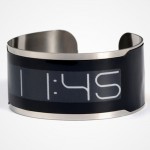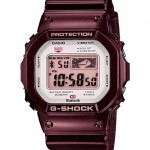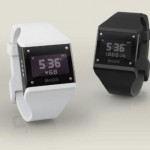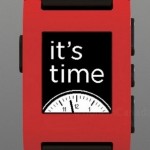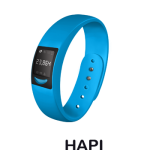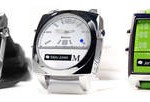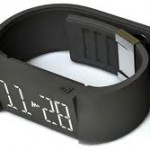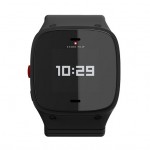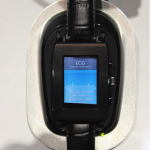The next big connected device is the wristwatch. At the 2013 CES earlier this month, there were a myriad of watches launched. Here are just a few examples:
I mentioned watches in my CES trends presentation when I talked about the next leg in connectivity and the Verge covered many of these watches as part of their CES coverage. There has been a tremendous written about watches – especially related to coverage of the dozen plus watches and similar devices we saw at CES earlier this year.
I believe watches can become the next big connected device segment because bringing relevant and meaningful connectivity to the wrist could prove useful to the end-user. Herein is the key element that will determine if watches can become the next big connected device story. In order for it to matter, the device has to bring relevancy to the individual user. The device has to enhance the value to the end user because it becomes yet another device that will need to be maintained. If the value it provides doesn’t offset the cost of maintaining the device (keeping the software up-to-date, keeping it connected to the smartphone, charging the device) then consumers will naturally stop using it.
Let’s discuss what these new breed of connected devices are bringing to the table:
- Fashion: Watches are first and foremost worn. Like anything we carry with us frequently and especially the things we wear, fashion becomes a key element of the end-user experience. As Oscar Wilde once put it, “Fashion is a form of ugliness so intolerable that we have to alter it every six months.” The biggest hurdle for watches on this front is that they also serve a utilitarian purpose. Smart watches must balance fashion and functionality.
- Pairing: One of the key features of smart watches is the ability to pair with smartphones. Either they do this so they can gain access to WiFi and cellular in order to upload (and download) information or they connect to smartphones so they can provide additional information and notifications on the watch interface (like text messages sent to the phone, alerts for incoming calls, etc). Most smart watches on the market or coming to the market this year appear to pair with smartphones and other mobile devices over Bluetooth and many require a related app to customize the watch.
- Screen technology and size: Most smart watches are being built with OLED or e-ink screens with screen sizes between 1 and 2 inches. Pebble’s screen size of 1.3 inches seems to be a good/optimal size though some watches with specific use-case scenarios (like say maps) are clocking much larger screens. Watches like the Martian watch have dedicated more of the watch real estate to being a watch so it has a smaller screen within the watch interface that supports 40-character previews of text messages.
- Watch face: The art of telling time have historically been the primary purpose for watches. While I don’t think that will be the case with smart watches, all smart watches will provide the user with a watch face by which they can determine the time. Some of the smart watches like Pebble even allow the end-user to customize the watch face.
- Indicators, alerts, and notifications: Most of the smart watches have embedded speakers for audible cues, vibration motors for oscillation prompts or screens to visually provide signals and alerts. We are overrun with alerts and prompts. Personally, I would turn off most alerts and only want alerts for incoming calls which would solve the digital age problem of not having the ringer of your phone on or having your phone buried deep in your bag. I could also imagine calendar alerts would be helpful.
- Bluetooth: Most smart watches are connecting to smartphones via Bluetooth and increasingly they are utilizing Bluetooth 4.0 (featuring Bluetooth low energy) to help extend battery life.
- Waterproofness: Smart watches come in a varying array of waterproofness – though perhaps surprisingly many/most are waterproof.
- Maps: several of the smart watches connect (or will eventually connect) to the map functionality of the phone to provide maps or turn-by-turn directions on the phone.
- ECG sensors: Several smart watches are embedding ECG sensors to measure the pulse in your wrist. This can be used for health and fitness related services and can also be utilized to identify you based on your unique pulse and lock down features if someone else puts on your watch. Given the explosion of health and fitness devices and services, I’d expect more smart watches to include ECG sensors.
- Accelerators: Accelerometers have become a mainstay in other connected devices and are a natural fit in a watch. With the accelerometer on the Martian Watch for example you can send incoming calls to voicemail with the shake of the wrist. Expect to see more here.
- Calendar: Several smart watches allow you to see upcoming calendar appointments on your watch.
- Email: Most smart watches alert you to incoming email and many will allow you to also read some or all of the incoming email.
- Text messages and incoming calls: Most smart watches alert you to incoming text messages and calls and provide relevant information like Caller ID.
- Social Updates: Many of the smart watches also allow you to see/read incoming Facebook posts or Tweets on Twitter.
- Battery Life: Most of the early connected watches need to be charged every few days and most still need to be charged regularly but some of the smart watchers are seeing an improved battery life. The Cookoo watch for example can run for a year on a standard button cell watch battery.
- Adjust Time Zone Automatically: The Casio G-shock can adjust time zones automatically based on location information retrieved from the iPhone.
- Music Control: Several of the watches allow you to control music on your smartphone which could be a useful feature if your phone is docked in a speaker dock or otherwise slightly out of reach.
- Voice Control: The Martian watch works with the voice command on iPhone or Android
- Apps, Widgets and Customization: Apps and widgets play an integral part in creating value on the smart watch. In some cases – as in the case of I’m Watch – the watch is running a version of Android and runs apps directly. In other cases, the phone runs widgets that can be customized. For many of these devices, apps on smartphones are used to program and customize the watch with features. Several of the smart watches are running an open source software open to 3rd-party developers so expect more to come for the watches that find mass market appeal and gain strong audiences. In many cases users can customize their watch utilizing different watch faces and a host of widgets and apps.
The most successful smart watches will allow for strong customization from the end-user. Beyond being able to customize watch faces we are seeing smart watches that can be customized with features like a presenter app enabling you to control PowerPoint presentations. Sony’s smart watch for example has an app that allows you to directly tap-to-like on Facebook. You can also use smart watches as a remote control for your phone’s camera or find a misplaced phone. Eventually we’ll see integration with websites of the most successfully adopted smart watches so notifications and alerts can be sent directly to the watch from different web properties.
Gaming is not a strong category for smart watches today, but over the next few years as the category of smart watches matures and adoption increases expect to see a push in the games arena. Watches are a natural interface for games intended for short periods of play.
I’m most interested to see how features like notifications and alerts evolve. Beyond just being alerted, does the watch provide a unique position from which to consumer information and subsequently perform other tasks? I look forward to seeing how features like the accelerometer are used in the future. Being able to shake-off an incoming call makes a lot of sense to me. It would seem to create some efficiencies which makes the device valuable and helps off-set the cost of maintaining another device. It is clear, we are only at the initial chapter and only time will tell (pun intended) if smart watches can become the next be connectivity story.

